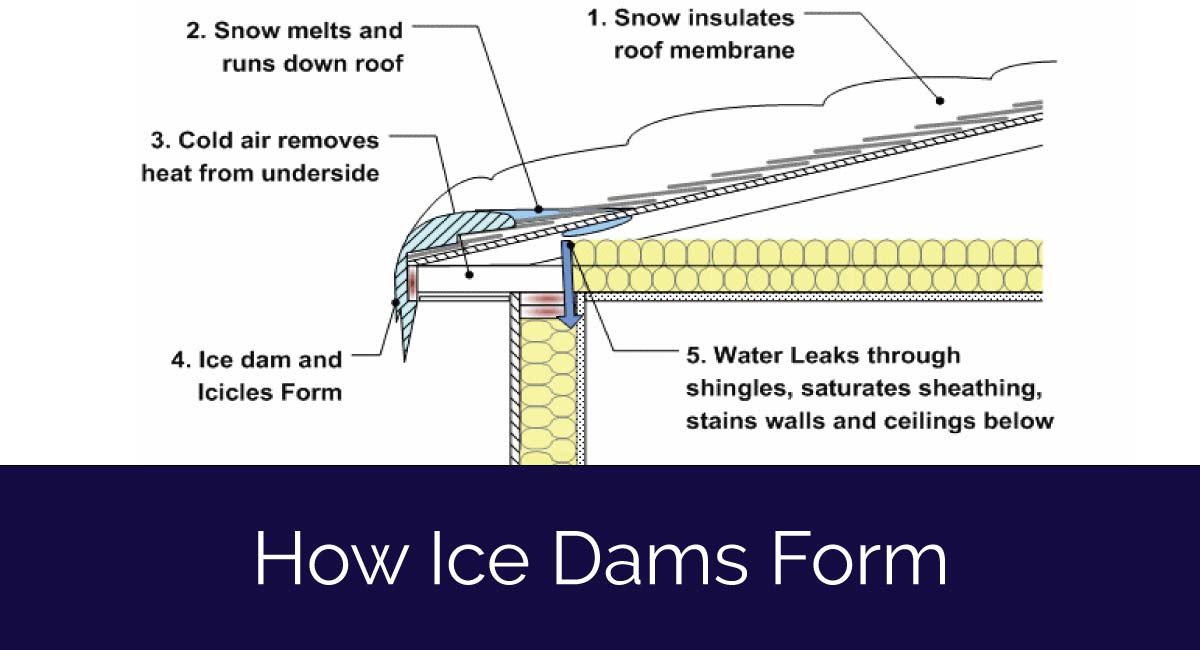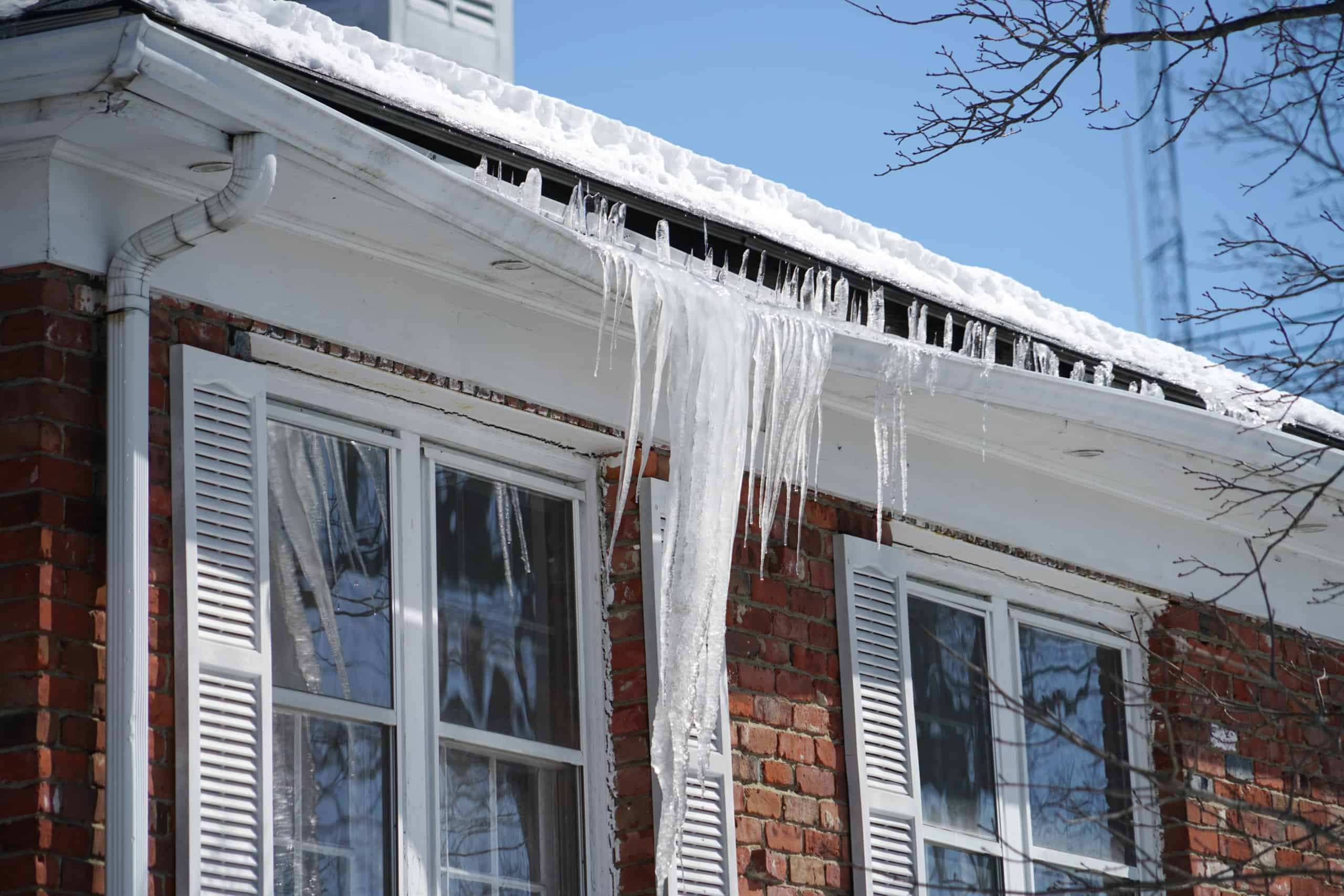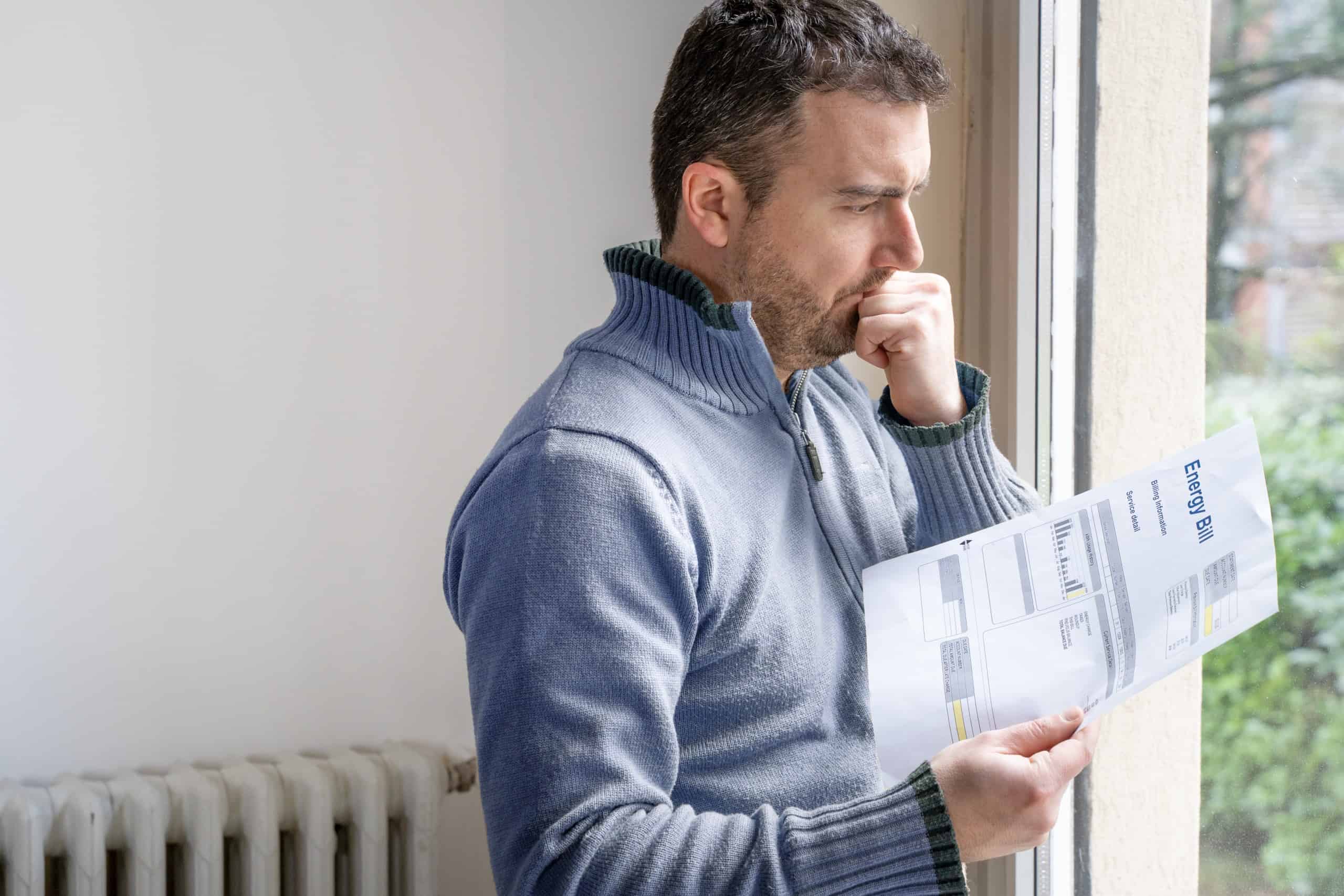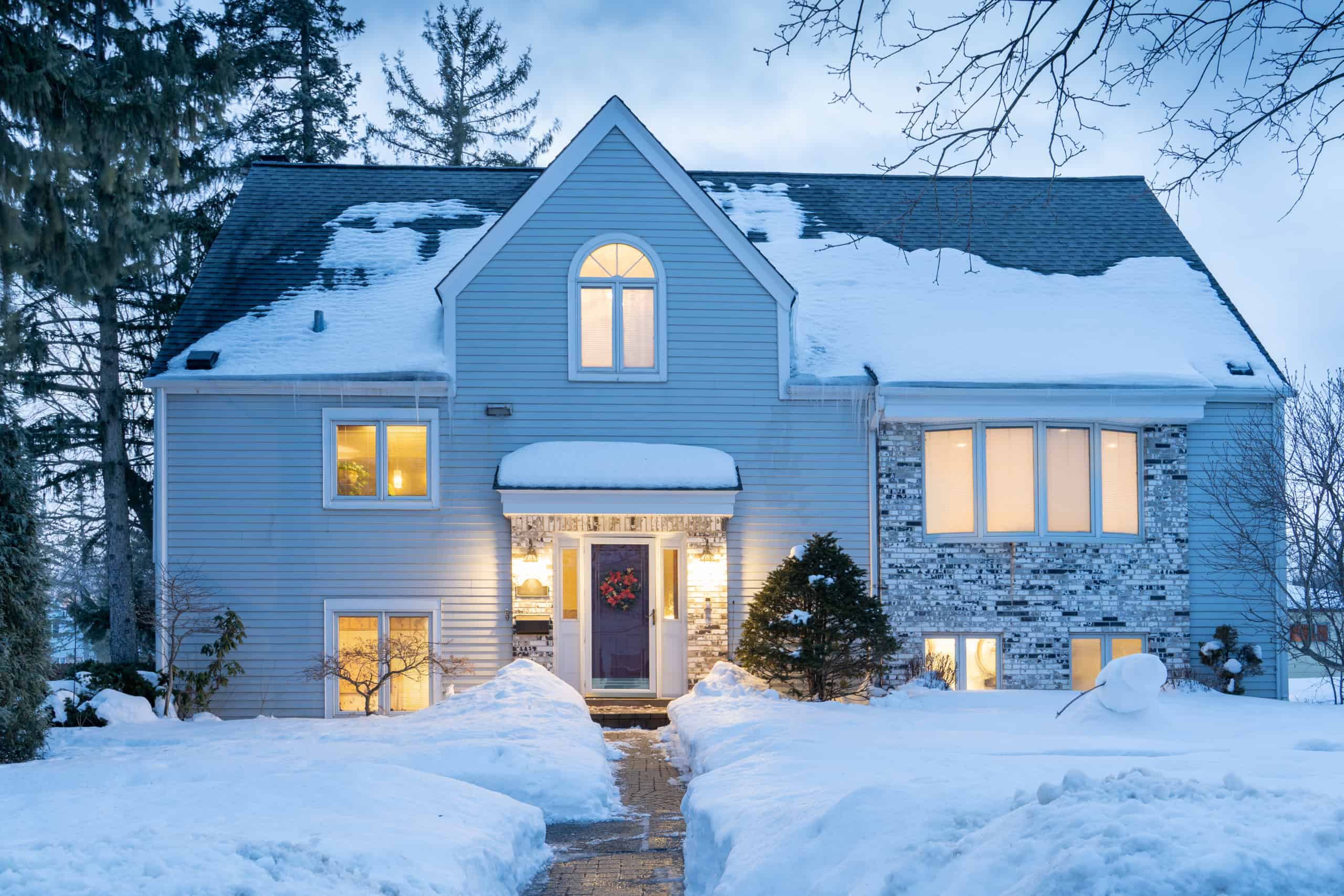Ice dams form when…
your roof is poorly insulated and ventilated, allowing your attic and roof to heat up and melt snow that has collected on your roof.

When the snow on your roof melts, it trickles down and freezes back into ice, typically at your home’s soffit (the underside of your eaves) or by the gutters where heat isn’t collecting and freezing temperatures remain. It’s at this point that ice begins to build up and an ice dam forms at the edge of your roof.
What Kind of Damage Can Ice Dams Do?
When an ice dam forms on your roof, the ice will slowly back up. As the meltwater freezes and collects, your ice dam becomes larger. What’s more, as the meltwater freezes, it expands, which causes the shingles to lift. If you’ve got ice dams forming, you already know that heat is escaping into your attic and melting the ice and snow on your roof. When the frozen ice that’s lifted your shingles melts once again, water will seep through your roof and into your home unless you have Roof Deck Protection and Leak Barrier installed beneath your shingles.
If you don’t have at least 3′ (we always do 6′ for our homeowners) of Roof Deck Protection and Leak Barrier placed around your roof’s eaves, rakes, sidewalls, and chimney (if you have one!), then water will leak into unprotected areas of your home.
Once the ice dam has grown so big that water cannot continue to collect and freeze on the ice dam itself, the water will find a new path. First, water will leak into the soffit areas. Eventually, water will leak inside your walls. We’ve seen this happen, unfortunately, way too many times. Trust me when I tell you that you do not want this to happen to your home.
When ice dams have gotten so bad that water is spreading across your ceilings and walls, it’s extremely costly to repair – you’re looking at inspecting your home to ensure you don’t have unnecessary moisture buildup that could lead to mold, new walls, new paint, and more. Not to mention you’ll need a new, properly ventilated and insulated roof, to make sure you won’t be repeating an unwarranted home remodel again thanks to ice dams.
You Need to Prevent Ice Dams
Proper insulation AND ventilation are the keys to preventing ice dams. It doesn’t matter how much insulation you put in your attic, if you don’t have enough ventilation, your home is prone to developing ice dams because any warm that might escape into your attic will collect rather than dissipate. In a perfect world, your attic should be the same temperature that it is outside. You should have 1” sq. ventilation per sq. foot of attic space to at least R-38.
If you’ve ever had mold or moisture problems in your home, they are symptoms of improper insulation and ventilation. These issues do NOT go away- they get worse.
Think Your Home Might Be Prone To Ice Dams?
If you’re worried about ice dams wreaking havoc on your home, we’re here to help. We’re the ice dam experts to help prevent ice dam formation while also improving the performance of your roof. Click here to learn more about our roof replacement and get a free estimate.





